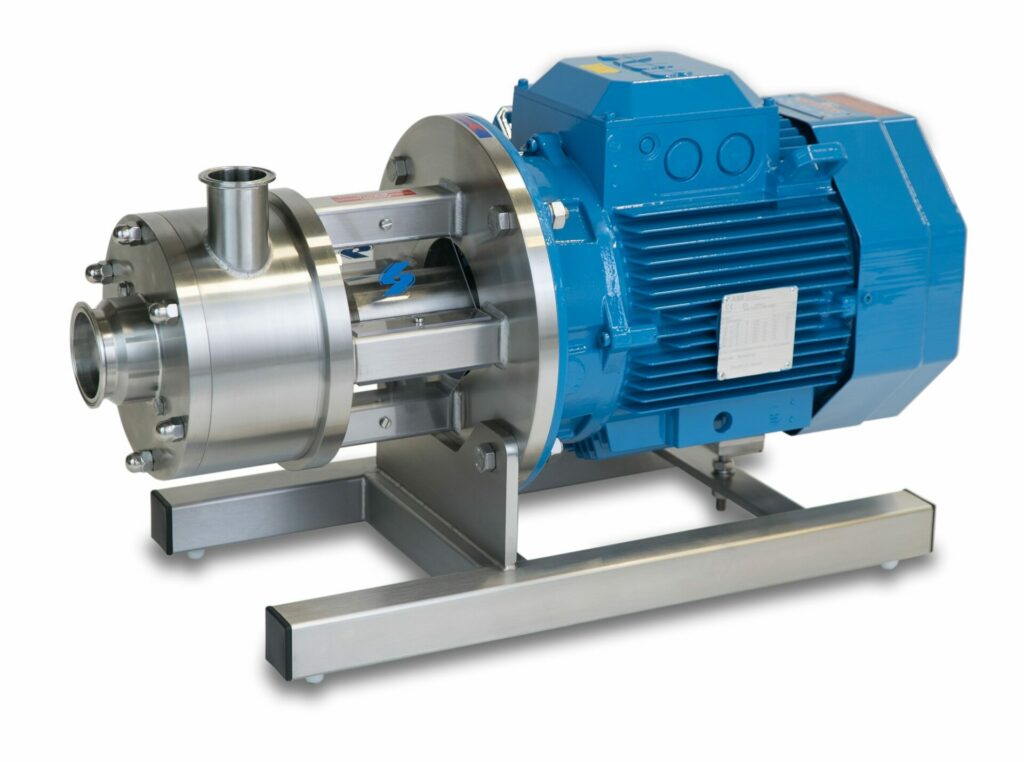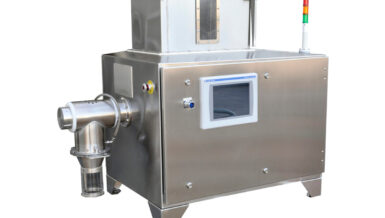But where there is a significant difference in viscosity between the two liquids, an agitator tends to move the two liquids around without actually blending them together, and it can take a long time to achieve a uniform blend. For example, when manufacturing honey-based products, which can be extremely difficult to process due to the high viscosity and ‘sticky’ characteristics of honey.
With a Silverson high shear mixer, the positive mixing action of the rotor/stator assembly draws the liquids into the workhead where they are rapidly combined before being forced out through the stator and projected back into the vessel; the liquids are blended almost instantaneously.
Silverson recently helped a customer mixing a highly viscous syrup into another lower viscosity liquid. The company, who operate on a global scale, has purchased a High Viscosity In-Line mixer to replace their old, non-Silverson equipment.
The customer contacted Silverson as their previous system was obsolete and they had problems maintaining the units and obtaining spares and wanted to replace the entire system with new equipment.

A 450UHS-HV High Viscosity In-Line mixer was trialled at the company’s site in the UK to see how well it coped with a highly viscous syrup they use in one of their recipes. The mixer was being used to produce a mixture which is sprayed onto foods to add flavour. The flavour for spraying was produced by mixing a viscous syrup into another lower viscosity flavour line. The In-Line mixer, fitted with a general purpose disintegrating head, has a manifold on the inlet side with an additional liquid feed port. During the trial the high viscosity syrup was pumped into the manifold and mixed with the lower viscosity flavour resulting in a uniformly mixed product which was then ready for spraying.
The mixer proved during the trials that it worked very well for this application. It was able to blend liquids of widely varying viscosities easily and handle the highly viscous syrup.
Elsewhere, a company in the US who specialise in food ingredients, release agents and lubricants intended for direct and indirect food contact have purchased a 450UHS In-Line mixer for manufacturing bakery release agents, after trialling the application on a laboratory scale.
These release agents help baked products release cleanly from oven bands, tins, indented trays and moulds. Using a specialist release agent also helps to reduce waste and improve the appearance of finished products.
The company was producing a water based bakery release agent using silicone and oils to form a water-in-oil emulsion with a viscosity between 100 – 500 cps. These agents were being mixed in 20,000 litre batches at ambient temperature, with a difference in viscosity between the two ingredients which are normally immiscible.
Two of the staff members on site had previous experience with Silverson Machines so the company contacted Silverson US through the Silverson website and an L5MA and Verso were demonstrated with the customer choosing to take an L5MA to complete their own trials. When using the L5MA the customer found greatly improved results compared to their previous mixing equipment where they were using an in-tank agitator. The product stability was much better and the Silverson equipment created a better emulsion compared with the agitator.
As the results of the trials were so good the customer then took a 450UHS In-Line mixer with an emulsor screen to scale up for full scale trials. Again, the mixer worked very well on the bakery release agent application, it worked so well that the company began trialling the 450UHS on multiple other products in their range also achieving excellent results, leading to the company placing an order for a new 450UHS unit.
At Silverson we know that the mixing challenges of the food and beverage industry are unique and constantly changing. That’s why our experts will work with you to make sure you get the right mixer for your specific use. We have a wide range of high shear food mixers available that are ideal for food applications, and unlike other equipment suppliers, Silverson has the flexibility to custom design and build machines to meet your exact specifications. So whether your application is dressings and sauces, honey, beverages, flavour emulsions or a host of others, we can help you get it right the first time.































